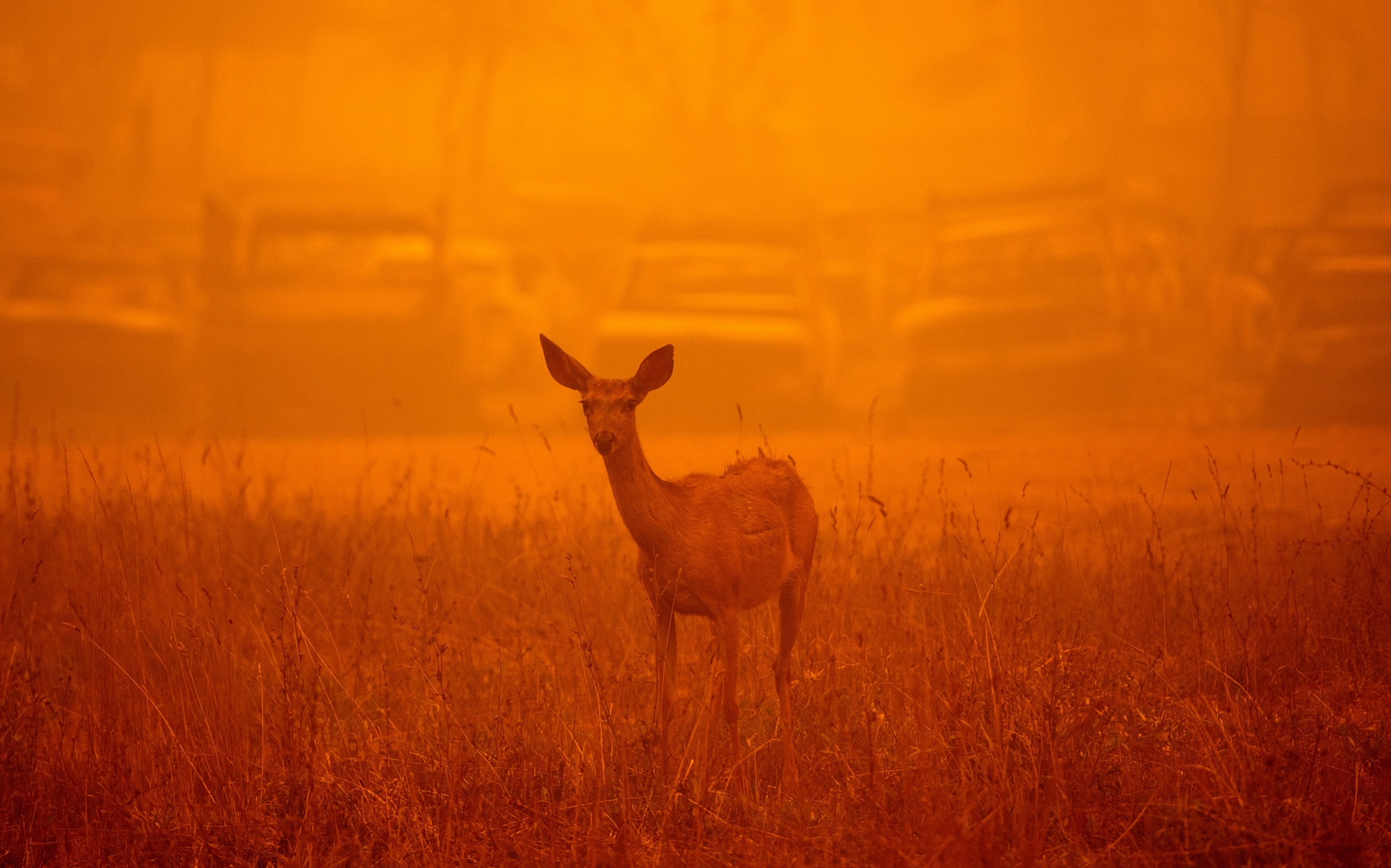

The raging wildfires in Canada recently engulfed the Northeastern US in smoke, causing the air quality to plummet to some of the worst ever recorded in the region. To minimize the exposure to hazardous air, health officials recommended that people stay indoors and wear masks. However, animals are also vulnerable to smoke inhalation. Zoos across New York, Washington, D.C., and Philadelphia closed last week to bring their animals indoors, but free-roaming ones had nowhere to go to escape the smoke.
How animals are affected by wildfire smoke
Like humans, animals can inhale wildfire smoke and experience respiratory irritation and detrimental impacts on their cardiovascular system, says Lisa Miller, professor of anatomy, physiology, and cell biology at the UC Davis School of Veterinary Medicine. All creatures that breathe air, whether they live on land or at sea, are vulnerable to airborne toxins found in wildlife smoke, such as fine particulate matter, carbon monoxide, and hydrogen cyanide. Inhaling smoke can make them susceptible to carbon monoxide poisoning, a life-threatening condition that limits oxygen supply to the blood, tissues, and organs.
Smoke inhalation can further result in tachycardia and respiratory symptoms like labored breathing, panting, and coughing. Death from smoke-induced asphyxiation is also a possibility. Repeated or prolonged exposure to smoke can weaken animals’ immune response or result in chronic heart disease, but long-term, adverse health impacts may also come from a single smoke event.
[Related: Almost everyone in the world breathes unhealthy air]
The health effects of smoke can vary greatly because the toxicity depends on the distance from the burn site and the type of fire, says Miller. As the pollutants travel, their properties may be altered by the sun and other chemicals in the air. What’s burned in the wildfire also matters, whether it’s only biomass like trees and plants or human-made materials like homes and cars. “All of these factors make understanding the science of wildfires so challenging,” Miller adds.
Some groups of animals, like birds, are at greater risk of experiencing negative health outcomes. “Birds are highly sensitive to air pollution because their respiratory system supports highly efficient gas exchange and lacks some of the mechanisms mammals use to clear particles from their airways,” says Olivia Sanderfoot, an ecologist and postdoctoral fellow at the La Kretz Center for California Conservation Science. Aside from physiology, behavior and habitat use may also influence how much smoke a creature is exposed to, and, subsequently, the short- or long-term health issues they might face.
However, there are still some major questions on the harms of wildfire smoke on wildlife.
Checking up on wildlife health after fires
According to a 2022 review in the journal Environmental Research Letters by Sanderfoot and her collaborators, there are a limited number of published studies investigating the health outcomes and behavioral responses of animals who’ve inhaled wildfire smoke. For example, there is a lot left to learn about any strategies animals may use to reduce their exposure to air pollution, says Sanderfoot.
The difficulty of conducting this kind of research may be a contributor. Monitoring animals before, during, and after wildfires is difficult to plan and may put the health and safety of workers at risk. And while studying animal response in controlled environments like labs or outdoor enclosures may be easier to implement, scientists can’t reproduce the exact air quality and visibility conditions that occur in the environment.
In her research, Sanderfoot uses citizen science data to learn more about how smoke affects birds. She encourages people in areas affected by wildfires or hazardous air quality to contribute wildlife observations to online databases like eBird or iNaturalist, which gather and provide data for research and conservation purposes. Observations on smoky days would be particularly useful, she adds, but it’s important to wear an N95 mask when going out.
Ways to protect animals from wildfire smoke
Understanding how wildfire smoke affects wildlife is crucial in preventing dangerous health impacts as the planet gets even hotter. Climate change can make wildfires more frequent and intense with increased drought, high air temperatures, and strong winds, resulting in hotter, drier, and longer fire seasons in some regions. The number of wildfires is expected to increase globally by up to 14 percent by 2030 and 50 percent by 2100. A feedback loop occurs: Fires can also exacerbate climate change because burning ecosystems like peatlands and rainforests releases carbon dioxide into the atmosphere.
The best way to protect wildlife from smoke inhalation, habitat loss, and other fire-related issues is to prevent high-severity wildland fires in the first place. According to a 2023 review in the journal Conservation, a combination of public and personal land management, social governance, and efficient fire suppression efforts like fire lines are needed to reduce wildfire risk and improve response mechanisms. This could cover measures ranging from proper land regulation to protections for areas with endangered species.
[Related: Longleaf pine forests in Alabama are making a comeback—thanks to fire]
Raising awareness about the risks of setting small blazes, like campfires, in the dry season is also essential. A 2017 study in the journal PNAS analyzed US wildfire data from 1992 to 2012, excluding controlled agricultural fires and those with an unknown cause. They found that human-started fires accounted for 84 percent of all wildfires.
More information about the impacts of smoke on wildlife is needed to possibly adjust conservation plans in fire-heavy times of the year, says Sanderfoot. After large wildfires, agencies like the US Forest Service, National Park Service, and Bureau of Land Management work together to restore animal habitats and support population comebacks. “Sometimes, science feels slow, but every day we make a little bit more progress,” says Sanderfoot. “Soon I hope we’ll have a much better sense of how we help wildlife endure both hotter and smokier summers.”
